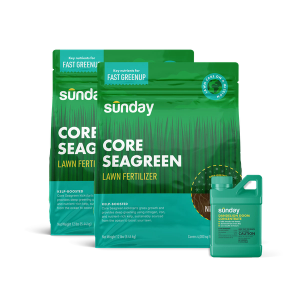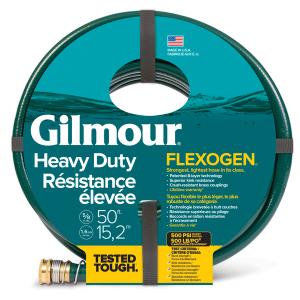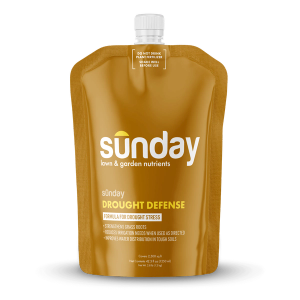At Sunday, we’re a fan of the natural stuff. But why do people choose artificial grass and what are some of the downsides?
What is artificial turf?
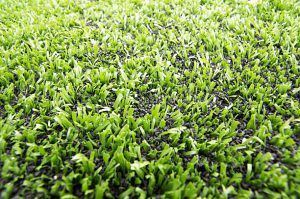
Artificial turf, sometimes called synthetic turf or AstroTurf, is made up of nylon, polypropylene, or polyethylene fibers, called pile. Some systems may also include some sort of netting, grid, and crumb rubber or sand infill material. Infill provides support to the fibers so they stand upright, and can help soften the surface.
Fun Fact: AstroTurf was originally called “ChemGrass” and is a specific brand of artificial turf. It was first installed in the Astrodome in 1966 to replace the struggling natural grass and was so successful and popular, they rebranded with the new name.
Why do people choose artificial turf for their home lawn?
Some cities may have restrictions on irrigation that drive people to seek out non-turfgrass options to help cut back on water use. Many people choose artificial turf because it’s green—all day, every day, year-round. Plus, artificial turf doesn’t turn brown from pet spots, can reduce weed pressure, can withstand heavy traffic, and requires no mowing.
What are the drawbacks of artificial turf lawns?
For one, artificial lawns remove habitat that supports soil organisms, plants, and wildlife, and replace that living system with a non-biodegradable, petroleum-based product that is likely to end up in the landfill down the line when it comes time to replace it. Plus, artificial lawns aren’t as good at reducing runoff as the real stuff. And from a management perspective, they’re not as maintenance-free as you might initially think. Tasks like snow removal or raking can be difficult—or even damaging—on artificial turf. To properly maintain synthetic turf over the course of it’s lifespan, you should always follow manufacturer's directions, which can include:
- Sweeping to keep it fluffy
- Cleaning or disinfecting
- Redistributing and replacing infill (if used)
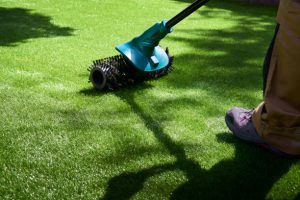
Probably the biggest issue for homeowners with synthetic turf, though, is the heat. Synthetic turf can reach up to 200°F on hot, sunny summer days—great for sanitizing the fibers, not so great for homeowners or pets who want to use the yard. Even if you irrigate to cool it down, temperatures can rise again in as little as ten minutes and reach max temps again within hours. And although some cities are encouraging the transition to artificial, others have ordinances that specifically ban artificial turf in front lawns.
Sunday approach to lawn care
We’re a fan of natural lawns that minimize our impact on the environment and support an entire backyard ecosystem. Whether you’re considering the switch to synthetic turf or you’re keeping it natural, we want to help you connect with nature, lawn better, and make eco-friendly changes, wherever you can.
Cited sources
Artificial lawns exhibit increased runoff and decreased water retention compared to living lawns following controlled rainfall experiments. Urban Forestry & Urban Greening.
AstroTurf. History of the AstroTurf Brand.
Cornell University. Synthetic turf.
Pennsylvania State University. Synthetic Turf Research @ Penn State.
Synthetic Turf: Research Answers to Common Questions. Pennsylvania State University Center for Sports Surface Research.











